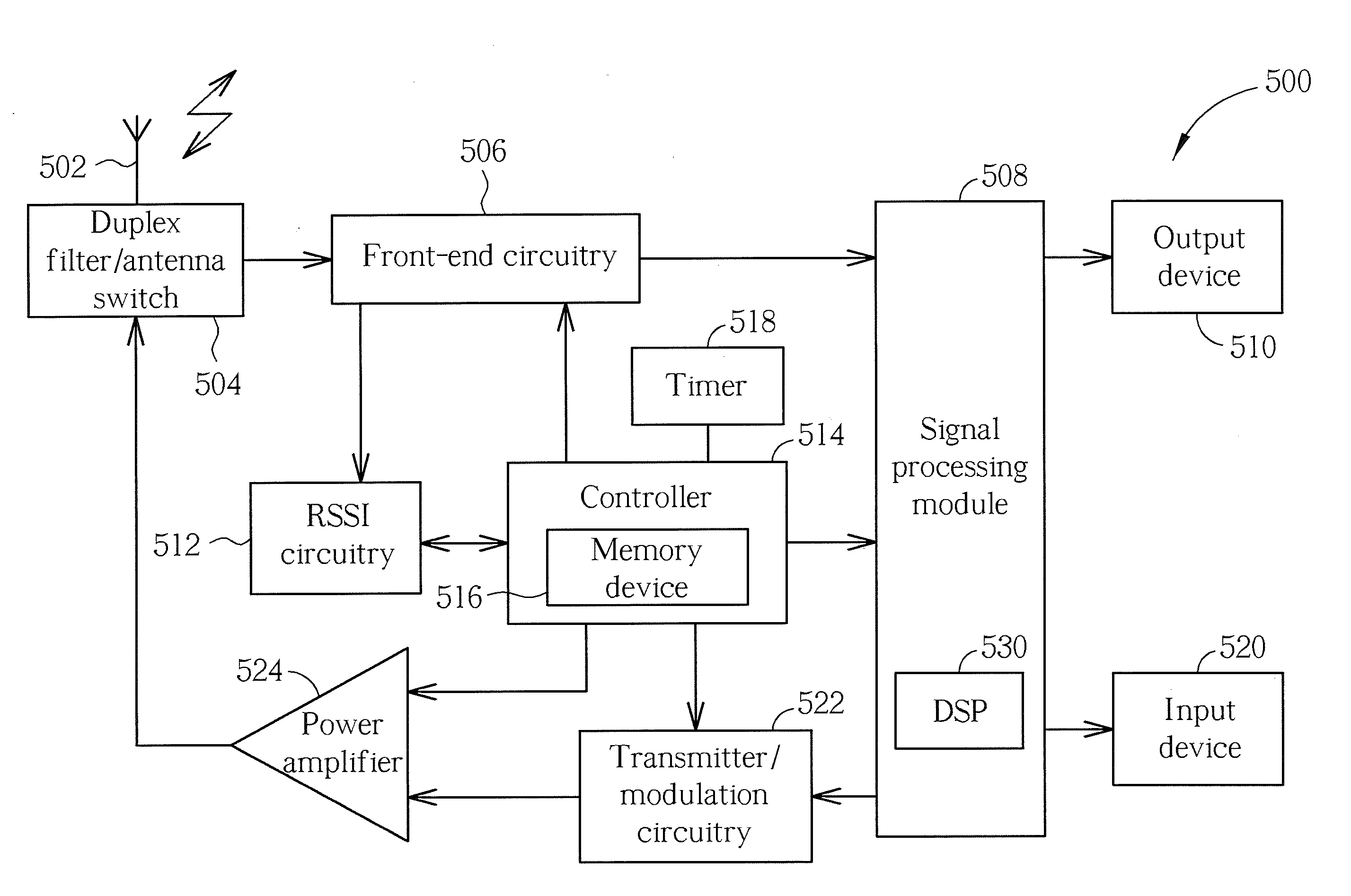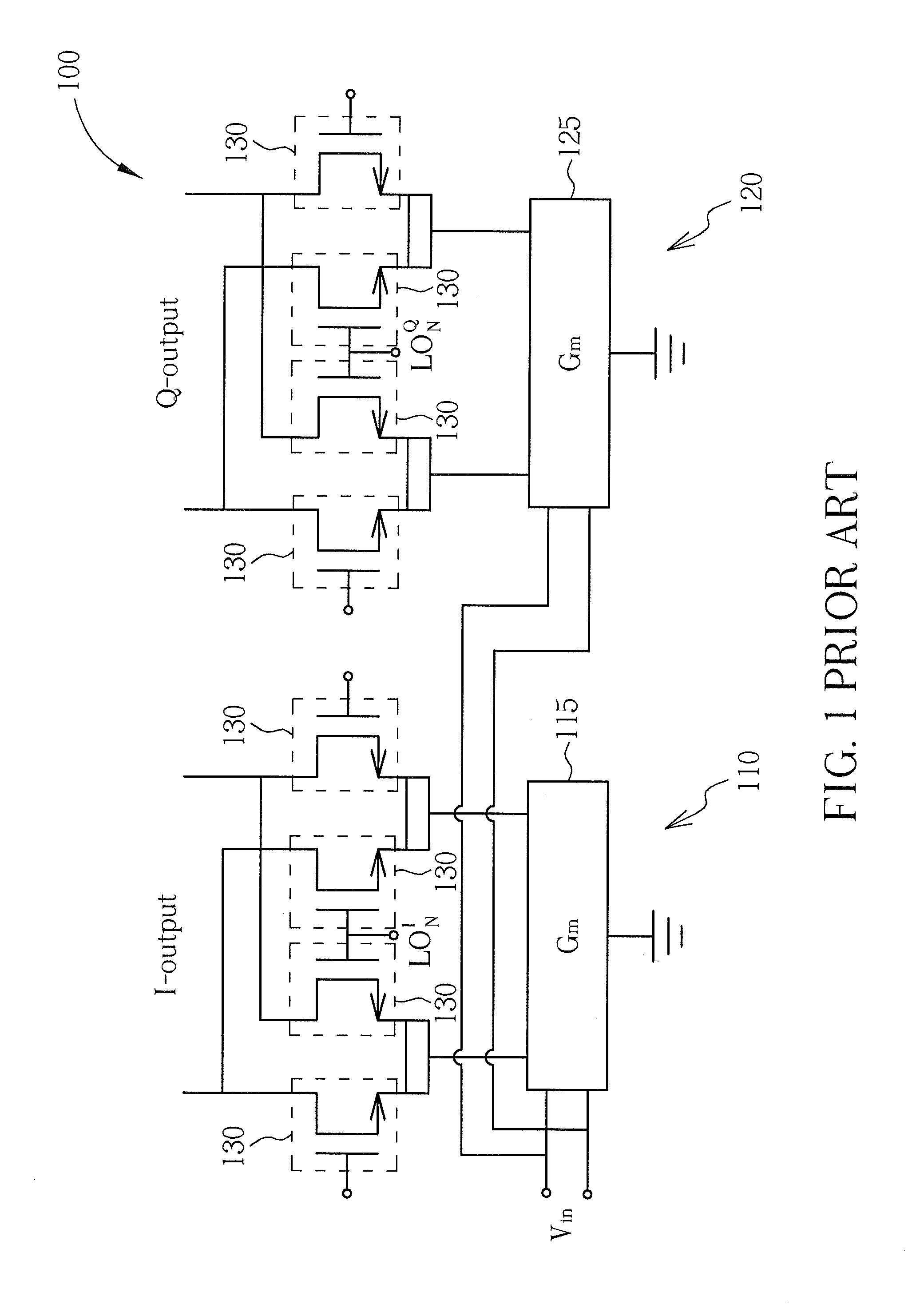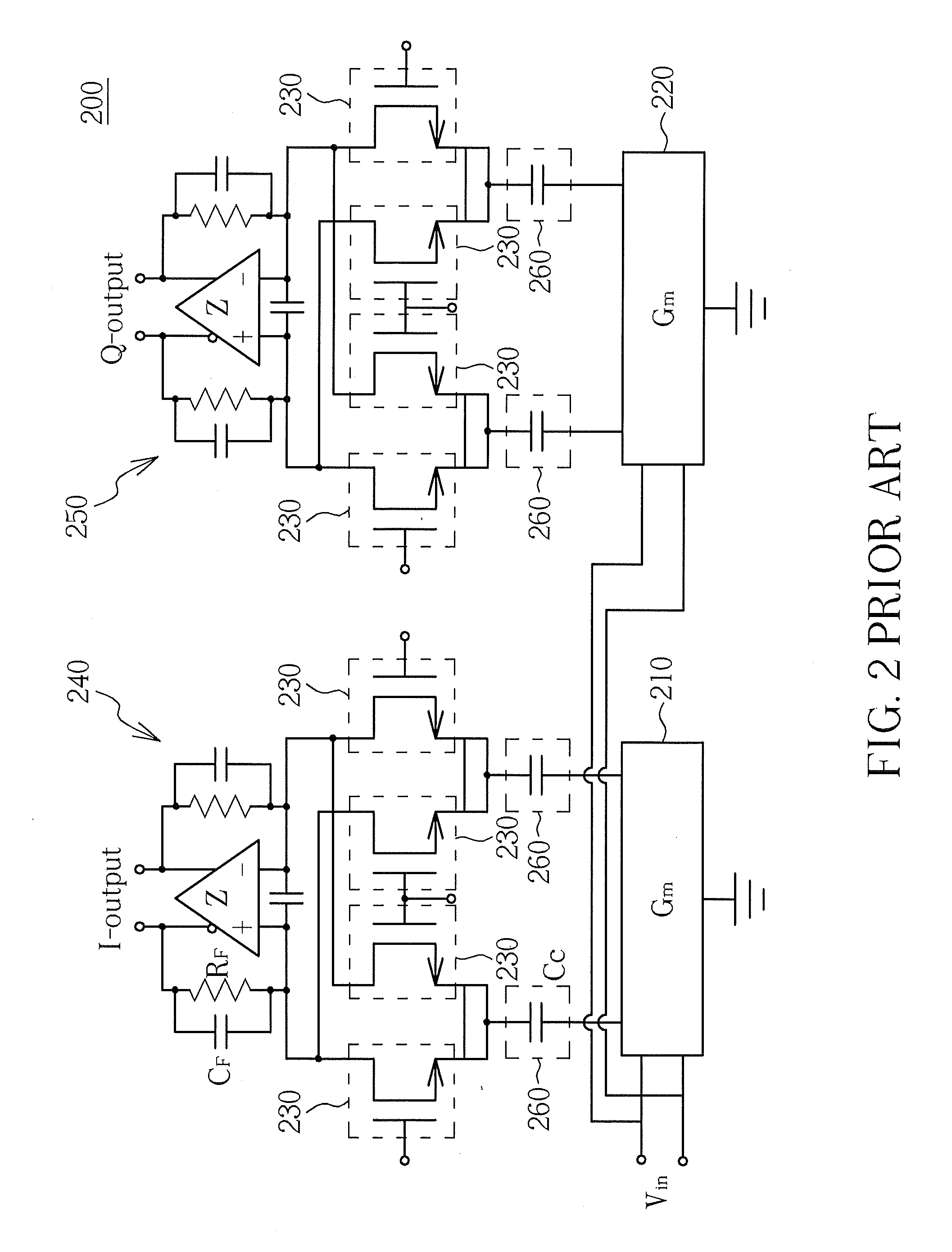Mixer circuit, integrated circuit device and radio frequency communication unit
a technology of integrated circuit and mixer circuit, which is applied in the direction of frequency-changer modification, transmission, electrical equipment, etc., can solve the problems of less than ideal linearity requirements for mixer circuits, less risk of noise pick-up, and limited number of circuit techniques that may be used
- Summary
- Abstract
- Description
- Claims
- Application Information
AI Technical Summary
Benefits of technology
Problems solved by technology
Method used
Image
Examples
Embodiment Construction
[0038]Examples of the invention will be described in terms of a radio frequency (RF) communication receiver front-end mixer circuit. However, it will be appreciated by a skilled artisan that the inventive concept herein described may be embodied in any type of mixer circuit. In a number of applications, a mixer circuit adapted in accordance with the hereinafter described examples may effectively perform frequency translation of a received signal, without distortion that would typically be introduced by, say, a transconductance input stage, and without the need for on-chip inductor coils or the like. In this manner, such a mixer circuit may comprise improved scalability, and may provide lower and well defined impedances at interfaces between itself and other integrated on-chip sub-blocks, such as a preceding low noise amplifier sub-block.
[0039]Referring first to FIG. 5, a block diagram of an example of a radio frequency (RF) communication unit (sometimes referred to as a mobile subsc...
PUM
 Login to View More
Login to View More Abstract
Description
Claims
Application Information
 Login to View More
Login to View More - R&D
- Intellectual Property
- Life Sciences
- Materials
- Tech Scout
- Unparalleled Data Quality
- Higher Quality Content
- 60% Fewer Hallucinations
Browse by: Latest US Patents, China's latest patents, Technical Efficacy Thesaurus, Application Domain, Technology Topic, Popular Technical Reports.
© 2025 PatSnap. All rights reserved.Legal|Privacy policy|Modern Slavery Act Transparency Statement|Sitemap|About US| Contact US: help@patsnap.com



